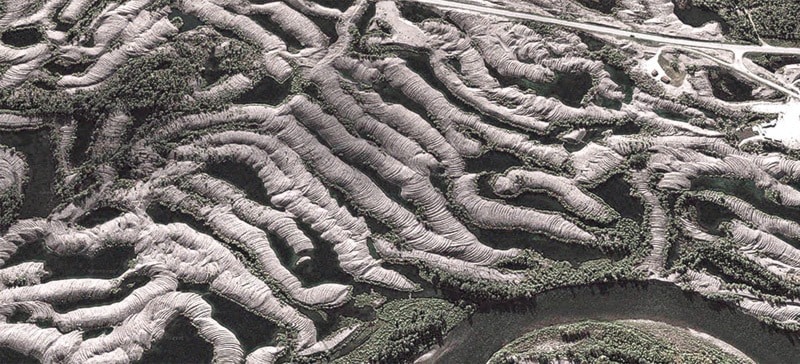The massive piles of gravel and rocks on either side of the North Klondike Highway are one of the most distinctive features of the drive into Dawson City.
They’ve sat there for decades, the legacy of the industrial gold dredging operations that dominated the region from the end of the Gold Rush until the 1960s.
As the massive dredges crawled up creek beds in the Klondike, extracting gold from the gravel, the waste rock was ejected from their sterns, forming long, scalloped, snake-like mounds that have largely resisted nature’s attempts to take them back.
Now, the City of Dawson has plans to turn one section of those old dredge tailings into a municipal historic site.
“To some, they look like a big pile of rocks,” said Dawson mayor Wayne Potoroka. “To us, they’re a representation of our mining industry, an important part of our mining history.”
The area to be protected is a section of tailings on the north side of the Klondike Highway, just inside the municipal boundary, Potoroka said.
That section was chosen because it’s “the only section of dredge tailings that isn’t otherwise staked or being used,” said Rebecca Jansen, the Yukon government’s historic sites registrar. Most of the tailings are either privately owned or fall within existing mining claims, and could theoretically be mined again to extract more gold.
“The interest here is to designate and protect and then interpret a representative sample,” Jansen said. “The intention isn’t that we need to save every dredge tailing in the area.”
Earlier this year, the City of Dawson sent a letter to the Yukon government asking for the property to be transferred from the territorial government to the City to be designated a municipal historic site.
On Jan. 31, Energy, Mines and Resources Minister Ranj Pillai responded and voiced his support for the project.
“Enabling the designation of the site as a municipal historic site and ensuring the City of Dawson has long term tenure to this land will help ensure that the important story of the Tr’ondek-Klondike region remains accessible to future generations,” he wrote in a letter to Potoroka.
Now, Jansen said, the City will work with the Department of Tourism and Culture to write a nomination for the property, which will be delivered to Dawson’s mayor and council. There will then be a 60-day public comment period, and if no one objects, the area will be designated after that.
Jansen said the process could be complete as early as this summer.
Myrna Butterworth, who grew up in Bear Creek, the industrial townsite just outside Dawson City, said the tailings piles have always been part of her life. But over time, she said, some of those piles have been flattened out and developed. She said the Dredge Pond and the Callison industrial subdivisions were both built on old tailings.
“It was a shame to see them flattened and done away with because everyone thought they were a mess,” she said.
She’d like to see an interpretive sign erected at the historic site to explain the history of the tailings piles, but otherwise, she said, the site should just be left as it is “and not disturbed anymore.”
Mike McDougall, president of the Klondike Placer Miners’ Association, said his father worked on the dredges for a year out of school, and he’d also like to see their legacy recognized.
He said much of the focus in Dawson City is on the Gold Rush, but that only lasted three years. The dredges don’t get much attention, he said, even though they ran for decades.
“The tailings represent that part of our history which we don’t dwell on very much.”
McDougall said the dredges were an engineering marvel, with components that travelled to Dawson City from all across North America.
“You don’t realize that this was this huge industrial complex which existed thousands of miles from the nearest source of support,” he said. “I’ve been a placer miner for 30 years, and I’m amazed at what they did.”
McDougall said it’s important to preserve some of the tailings, because thanks to modern reclamation rules, current placer mining operations won’t have the same lasting impact on the land. “We erase that evidence,” he said.
It’s an odd thing, perhaps — preserving the waste left behind by an industry subject to few environmental regulations that left huge scars on the landscape.
But Potoroka said most Dawson residents want to see some of the tailings protected.
“They do represent a real and important, significant time in Yukon history,” he said. “We just want to make sure that we’ve got some set aside for the future.”
The proposed municipal historic site will likely also be included in Dawson City’s bid to become a UNESCO World Heritage site.
Contact Maura Forrest at maura.forrest@yukon-news.com
